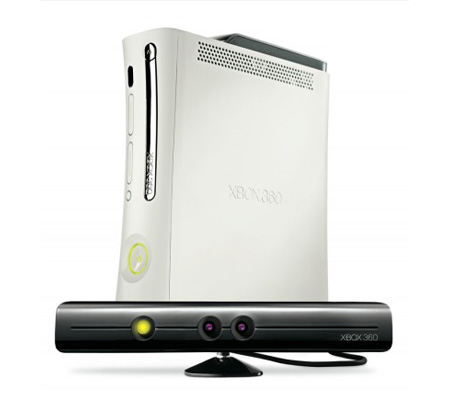Microsoft Project Natal
Microsoft’s attempt to reach out to the vast casual gaming audience has taken on a unique form. Although motion-sensing remains a key ingredient, Microsoft hopes to create a gesture-based experience without the need for users to hold any form of peripheral.
Sounds bold, but it reckons it can do it with a piece of kit codenamed “Project Natal”.

In its simplest form, Project Natal (pictured above) is a horizontal peripheral measuring roughly 25cm. It’s designed to sit below or above a television screen and connects to an Xbox 360 console. Once connected, it will spot human presence via facial recognition and allow users to control both the Xbox 360 interface and games using gestures or voice commands.
Sounds promising, so how does it do it? Inside Project Natal are a number of components that come together to deliver the full experience – including a webcam and multi-array microphone, a depth sensor and a processor running proprietary software.
All seems a bit complicated, but putting it simply, Project Natal emits an array of beams that hit objects in its path and bounce back to the device. With the data returned, the on-board processor’s proprietary software is able to map a surprisingly accurate image of everything in its field of view.
Exactly how accurate? Well, irrespective of objects in a room – including, for example, a couch – Project Natal is able to map the full body of multiple players, with project director Kudo Tsunoda suggesting that it could track a user’s individual fingers depending on distance from the device.
The theory is that a user is able to walk in front of their console, be instantly recognised, and be able to control the system and it games by moving parts of their body in a 3D space mapped by Natal.
Is it too good to be true? Although Microsoft has publicly shown Natal tech demonstrations, it remains to be seen how well it can be implemented in real-world usage. However, game developers have already shown a keen interest, and Project Natal has quickly become the focus of media attention. It’s expected to become available in 2010, but despite its apparent technological advantage, we’d assume it would be more costly to produce than, say, a Wii Remote or a PlayStation Motion Controller, and that may be Natal’s biggest obstacle as it attempts to lure a casual-gaming audience in the midst of a recession.
Summary
The age-old joypad continues to live on as the preferred input method for the experienced gamer, but following the pioneering efforts of Nintendo, motion-based control looks set to become a key gaming element in the coming years.
With all three of the biggest games console manufacturers pushing the technology forward, both casual and hardcore gamers alike can expect to be faced with multiple motion-sensing controller choices in the near future.













